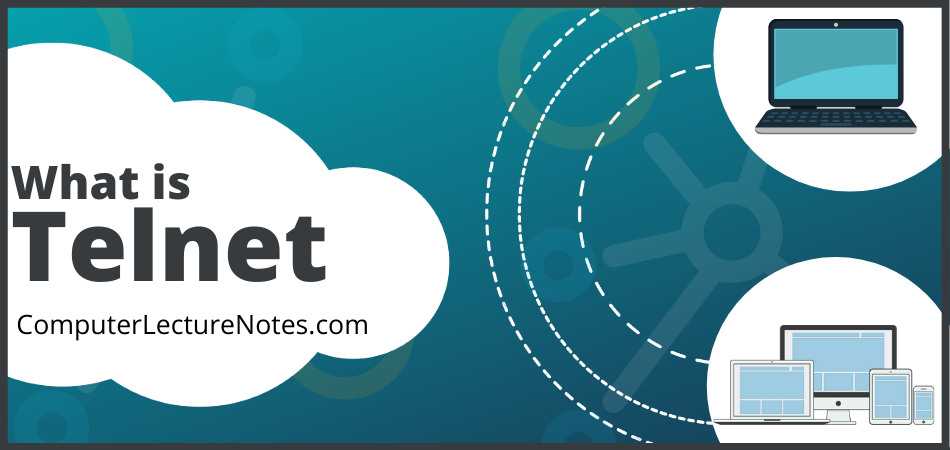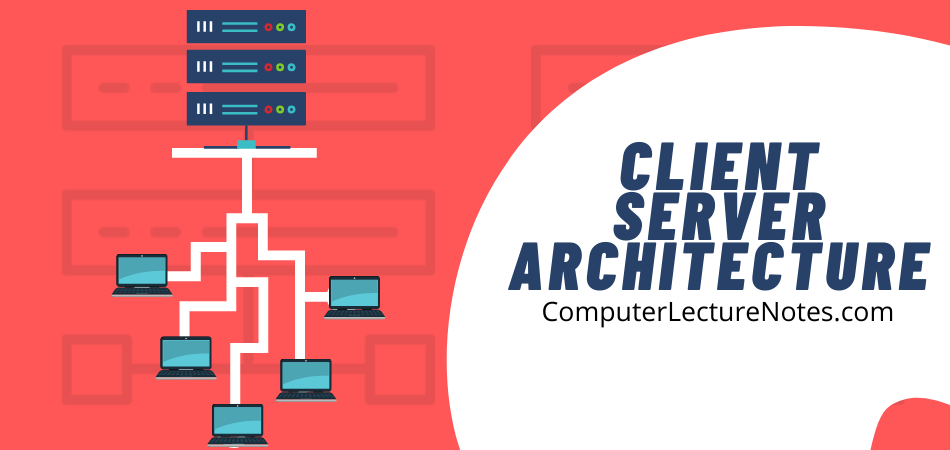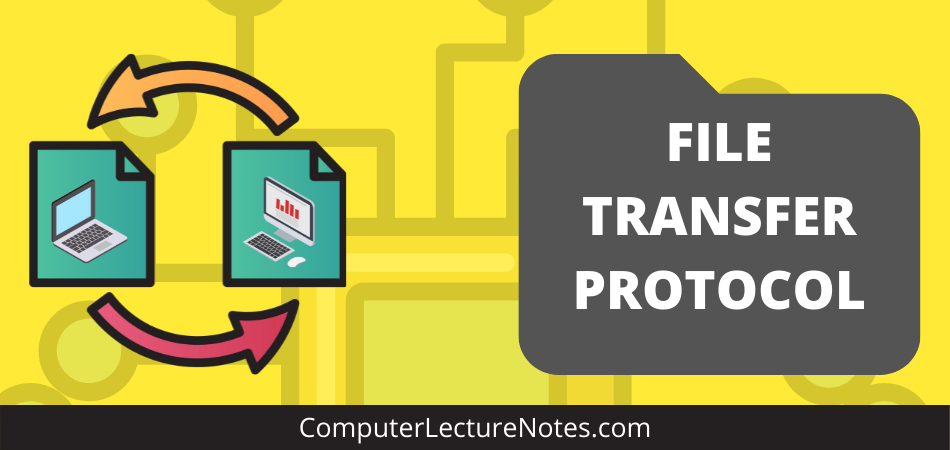What is Telnet
Telnet is a protocol that lets you connect to other computers on the Internet and use the resources present there. These resources can be online databases, chat services, programs etc.
Each computer connected on the Internet has a unique address that helps to locate it. This is the IP (Internet Protocol) address. The address consists of a set of four numbers separated by periods. Thus, a typical address can be 202.147.254.3. The addresses can also be written in words www.webdevelopersnotes.com, which helps in easy recollection (by humans).
To telnet to a computer, you should know its IP address, username and password. Telnet is available on the Windows PC (XP users see the next paragraph). Click on the ‘Start’ Button and select ‘Run’. Type telnet in the Pop-up window. The Telnet window now opens up. Select ‘Remote system’ from the ‘Connect’ drop down menu. Type in the remote computers’ address. (Note: you have to be connected to the Internet in order to use Telnet). The remote machine will now ask for a username and password. Type these to login. Your local computer now acts as a terminal of the distant machine and you can use its resources including its processor power! Note: Some telnet services require you to connect only to a specific port on the remote computer. In such cases, you should also know the port number and append it to the IP address.
The Windows XP telnet window is slightly different. You have to click on the ‘Start’ button and then on ‘Run’. Type telnet in the pop-up window. This should now start the telnet window with the prompt Microsoft Telnet>. To connect to a remote computer type, open site-name. To close the window, type quit at the telnet prompt.
Note: The site-name can be the I.P. address of the remote computer, its domain name or the telnet host name.The telnet program is also built into Unix systems. Just type telnet site-name at the prompt. You can use telnet from Macintosh computer employing a telnet client program.
Telnet is useful not only to retrieve emails, information and run programs but can also play an important part in web site maintenance.
Key Concept: Telnet is one of the oldest protocols in the TCP/Ip suite, first developed in the 1960s to allow a user on one computer system to directly access and use another. It is most often used for remote login, With telnet client software on a user’s machine establishing a session with a telnet server on a remote host to let to user work with the host as if connected directly. To ensure compatibility between terminals and hosts that use different hardware and software, communication between telnet client and server software is based on a simplified, fictional data representation, called the Network Virtual Terminal (NVT), which can be enhanced through the negotiation of options.
Telnet is a client/server protocol that uses TCP to establish a session between a user terminal and a remote host. The Telnet client software takes input from the user and sends it to the server, which feeds it to the host machine’s operating system. The Telnet server takes output from the host and sends it to the client to display to the user. While Telnet is most often used to implement remote login capability, there is no concept specifically pertaining to logins in the protocol, which is general enough to allow it to be used for a variety of functions.
Telnet, which stands for Telecommunications Network, is a protocol that provides a way for users (or clients) to connect to other users via servers on the Internet; this could be in the next building or around the other side of the world. In most cases, users use Telnet to communicate with a remote login service.
Telnet is based on three main principles:
- The concept of the Network Virtual Terminal (NVT).
- The concept of negotiations.
- A symmetrical view of terminals and processes.
Network Virtual Terminal
The Network Virtual Terminal is a device used by Telnet to enable a local computer to communicate with a remote computer. To make Telnet inter-operate between as many systems as possible, it must accommodate the details of heterogeneous computers and operating systems. To accommodate heterogeneity, Telnet defines how data and command sequences are sent across the Internet. The definition is known as the Network Virtual Terminal (NVT). The NVT defines how data and commands are sent across the internet. The NVT is a bi-directional character device that makes use of a printer and a keyboard. The printer responds to incoming data and the keyboard produces outgoing data which is sent over the Telnet connection. The NVT is seen as a half-duplex device.
Concept of Negotiation
The option negotiation mechanism allows the user to set terminal parameters to values other than the default or to negotiate more sophisticated facilities. The Telnet protocol negotiation mechanism can be initiated by either side. Besides negotiating whether or not a particular option is to be in effect, the mechanism also allows one to specify, when appropriate, which side is to perform the function. For example, a user may negotiate the Echo option and specify whether echoing is to be done locally or remotely to the initiator of the negotiation.
Four commands support option negotiation ( DO, DON’T, WILL and WON’T).

Symmetrical View
The third concept of Telnet is one of symmetry in the negotiation syntax. This symmetry allows either the client or server ends of the connection to request a particular option as required, thus optimizing the service provided by the other party. A terminal protocol should not only allow a terminal to interact with an application process on a host, but it should also allow process-process and terminal-terminal interactions. Although a majority of the connections established will be of the process-terminal form, the symmetrical forms can be very useful.

Uses of Telnet
Telnet is a text-based way of connecting to other computers and networks. It is one of the oldest forms of the Internet. When you telnet to another computer, it is like you are using a terminal of that system. Telnet is typically used with Unix-oriented systems.
Telnet operates in a client/server environment in which one host (the computer you are using, running Client (User) Telnet) negotiates opening a session on another computer (the remote host, running Server Telnet). During the behind-the-scenes negotiation process, the two computers agree on the parameters governing the session. One of the first things they decide is the terminal type to be used — in general, a line-by-line network virtual terminal, for simplicity’s sake. Virtual terminal, in this context, refers to a set of terminal characteristics and sequences that both sides of a network connection agree to use to transmit data from terminals across the network, regardless of the terminal used.
Telnet is a program that lets you use the power of the Internet to connect you to databases, library catalouges, and other information resources around the world. Want to see what the weather’s like in an American city? Check on crop conditions in Azerbaijan? Get more information about somebody whose name you’ve seen online? Telnet lets you do this, and more. Alas, there’s a big “but!” Unlike the phone system, Internet is not yet universal; not everybody can use all of its services. Almost all colleges and universities on the Internet provide telnet access.
In order to initiate a Telnet session, you need to know the address of the remote host computer.
The syntax for using Telnet is :
Telnet < address of remote host >
For example: telnet libra.math.tau.ac.il – This will initiate an interactive session with the libra server at the School of Exact Science at the Tel-Aviv University.
Every Telnet site has two addresses – one composed of words that are easier for people to remember; the other numerical address better suited for computers.
Many remote hosts require you to have an account to login (you must have a user-id and a password). However, there are some remote hosts that do not require users to have an account. Users can login with the general user-id and password are usually not required (it is inserted automatically).
Logging in is the process by which individual access to a computer system is controlled by identification of the user using credentials provided by the user.
Remote Logging is the process by which individual gain access to a Remote computer system. Remote computer system is a host computer which allows a remote user to view the contents of the host computer’s desktop and access to other resources over the internet.
The host computer can also hand over keyboard and mouse controls to the remote user. With remote log-in, your home or work computer is the host and you (in this case) are the remote user.
Remote login requires three basic components:
- Software download
- Internet connection
- Secure network
For remote login to work, both the host computer and all remote users have to download and install the software which provides remote connection. These software typically includes two distinct programs: (Example: LogMeIn Free , Citrix XenApp , Timbuktu TurboVNC )
- Program that runs on the host computer
- A viewer program that allows the remote user to view the contents of the host computer’s desktop in a resizable window\
- Remote login will only work if the host computer is powered on, connected to the Internet and running the required software.
- Each time you open and run the remote access software on the host computer, the software starts a new session.
- Each session has a particular ID and/or password that are required to remotely log in to the host computer.
- Once the session has been established, remote access software quietly runs in the background of the host computer until a remote login request is made.¬
- To log in to the host computer from home (or while traveling), you’ll need to run your version of the remote access software and enter in the correct session ID or password. Or some services allow you to log in through a Web site.
- Once you’re logged in, both computers will communicate with each other over a secure network. Access to this network can be free or subscription-based, depending on the service. While connected, you’ll have access to keyboard controls, mouse controls, all software and all files on the host machine.
For security purposes, all packets of information that are sent over the network are typically encrypted on each end with secure shell (SSH) or 128-bit advanced encryption standard (AES) encoding. For added security, no session IDs or passwords are stored on desktop sharing servers; they’re automatically generated by the host machine.
Terminal emulation is the ability to make one computer terminal, typically a PC, appear to look like another computer, so that a user can access programs originally written to communicate with the other terminal type.
- Terminal emulation is often used to give PC users the ability to log on and get direct access to legacy programs in a mainframe operating system.
- Terminal emulation requires installing a special program in the PC or on a local area network (LAN) server to which it is connected.
- Typically, an enterprise with mainframe computers installs a terminal emulation program in all its workstations (or LAN servers).
- Workers can work locally with Windows or other PC or workstation applications and also open a window and work directly with mainframe applications. The terminal emulation program runs like any other workstation application as a separate program task providing its own window to the user. However, instead of content with a graphical user interface (GUI), the terminal emulation window presents some particular mainframe operating system or application interface that is text-only.
- Different terminal emulation is required for specific types of terminals – for example, the IBM 3270 display terminal, the AS/400 5250 display terminal, or DEC’s VT100 terminal.
- The program performing the terminal emulation must understand the data stream from the mainframe at several communication levels, including data link control and session control.
Many terminal emulators have been developed, for terminals such as VT100, VT220, VT320, IBM 3270/8/9/E, IBM 5250, IBM 3179G, Data General D211, Hewlett Packard HP700/92, Sperry/Unisys 2000-series UTS60, Burroughs/Unisys A-series T27/TD830/ET1100, ADDS ViewPoint, Sun console, QNX, AT386, SCO-ANSI, SNI 97801, Televideo, and Wyse 50/60. Additionally, programs have been developed to emulate terminals which are themselves programs, such as xterm and assorted console terminals (e.g., for Linux). Finally, some emulations simply refer to a standard, such as ANSI. These programs are available on many platforms ranging from DOS and Unix to GUI operating systems such as Windows and Macs, to embedded operating systems found in cellphones and industrial hardware.




